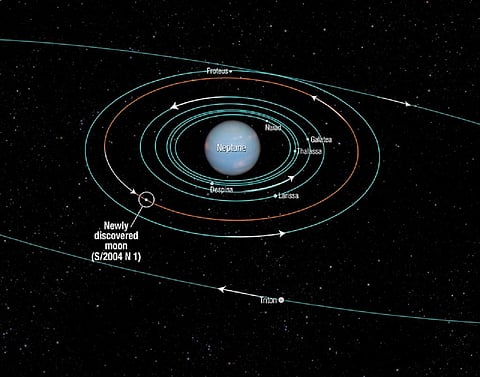

Years after discovering a tiny moon floating around Neptune, scientists have confirmed its existence.
Using NASA’s Hubble Space Telescope, Mark Showalter of the SETI Institute discovered Hippocamp in July 2013. There are 13 moons floating around the planet, namely Triton, Nereid, Naiad, Thalassa, Despina, Galatea, Larissa, Proteus, Halimede, Sao, Laomedeia, Psamathe and Neso — all named after sea gods and nymphs from Greek mythology.
Scientists concluded that a collision with a comet billions of years ago may have caused a part of one of the larger moon’s to chip away and eventually form Hippocamp. In fact, it floats really close (about 12,070 kilometers) to the moon Proteus — the outermost and largest of these moons.
"The first thing we realised was that you wouldn't expect to find such a tiny moon right next to Neptune's biggest inner moon. In the distant past, given the slow migration outward of the larger moon, Proteus was once where Hippocamp is now," Showalter was quoted as saying in a press note.
Images from NASA’s 1989 Voyager 2 mission had also confirmed a large crater on Proteus — confirming the collision theory.
NASA explains the history of Neptune's satellite system — starting from Triton, which was pulled into orbit from the Kuiper Belt, a cloud of dust and debris floating beyond the orbit of Neptune, billions of years ago.
Triton settled into a circular orbit and debris from shattered Neptunian moons rearranged into a second generation of natural satellites. Further comet collisions with the moons may have led to the birth of Hippocamp.
"Based on estimates of comet populations, we know that other moons in the outer solar system have been hit by comets, smashed apart, and re-accreted multiple times," Jack Lissauer from NASA's Ames Research Center in California's Silicon Valley, and co-author on the new research, said in the press note.
The name Hippocamp is again derived from Greek mythology, where it symbolises a sea monster; while Hippocampus is a region in the brain that governs emotions, memory and cognition.
The findings have been published in the journal Nature.